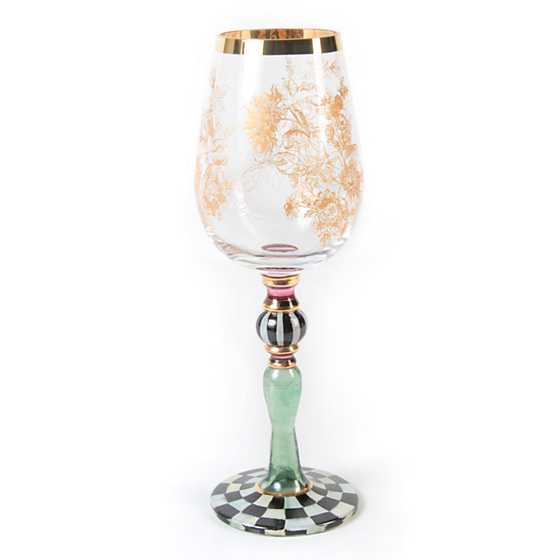Blooming Wine Glass – 58600-195 – MacKenzie-Childs
Beautiful, tall, elegant, and so perfect with our Parchment Check™ and Aurora collections.
Beautiful, tall, elegant, and so perfect with our Parchment Check™ and Aurora collections. The delicate floral design, matching the one you know from our Aurora Enamelware, is inspired by antique traditional patterns from Stoke-on-Trent, home of the English pottery industry. With their long, leggy stems and significant weight, they bring notable stature to your table, adding instant sophistication and opulence. Beyond impressive for formal entertaining. Mouth-blown Eastern European glass with hand-painted Courtly Checks, Courtly Stripes, and soft gold and colored lustres, as well as hand-applied decals.
Additional information
| Dimensions | 3.75" dia., 10.75" tall, 18.5 oz. capacity |
|---|---|
| Matrials | Mouth-blown, hand-painted glass with transfer decoration and gold lustre embellishment. Pieces may vary due to the handmade nature of each product. Handcrafted in Eastern Europe. |




Reviews
There are no reviews yet.